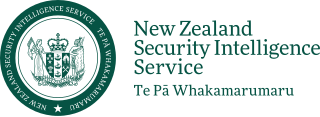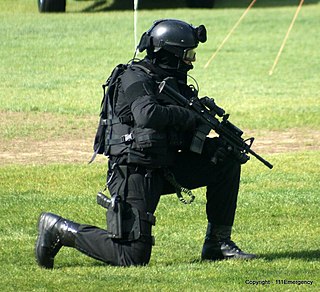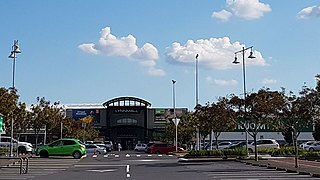List of notable incidents
Most attacks, or attempted acts, of terrorism in New Zealand have been bombings as a form of protest. [11]
Huntly rail bridge bombing
On 30 April 1951, during an industrial dispute, a rail bridge three miles from Huntly, on the Glen Afton branch line, was dynamited. [12] [13] [14] Although the morning passenger train ran over the damaged bridge, it did not collapse. [14] After regular railway line patrols were commenced, trains ran normally again the next day. [12] [15] Sidney Holland, the Prime Minister of the time, called it an "infamous act of terrorism". [14] Academic Lance Beath writes that the bombing might not be considered a "terrorist" incident because there was no intent to kill or injure people and the only objective was blocking supplies. [16] Conversely, author Len Richardson accepts the police assessment that the explosion was intended to intimidate open-cast mineworkers. [13]
Vietnam War protests
In 1969–70 there was an alleged attempt to bomb the Waitangi flagpole, although any credible evidence of this occurrence is hard to find. Aside from the alleged flagpole bombing attempts, the intense protests against New Zealand's involvement in the Vietnam War mostly involved throwing red paint (symbolic of blood) and flour. [11]
Anti-apartheid protests
In 1976 the Hutt Recreation Ground in Lower Hutt hosted the Men's Softball World Championship. The tournament was controversial due to the participation of a team from Apartheid South Africa. Prior to the tournament start, an opponent to South Africa's involvement planted an incendiary bomb in the middle of the ground's softball diamond, which exploded and damaged a 10 metre radius. A caller then rang the Wellington newspaper, The Dominion , and claimed responsibility. [17]
Wanganui Computer Centre bombing
On 18 November 1982, a suicide bomb attack was made against a facility housing the main computer system of the New Zealand Police, Courts, Ministry of Transport and other law enforcement agencies, in Whanganui. The attacker, an anarchist named Neil Roberts, was the only person killed, and the computer system was undamaged. [18] [19]
Wellington Trades Hall bombing

On 27 March 1984, a suitcase bomb was left in the foyer of the Trades Hall in Wellington. [20] The Trades Hall was the headquarters of a number of trade unions and it is most commonly assumed that unions were the target of the bombing. [11] Ernie Abbott, the building's caretaker, was killed when he attempted to move the suitcase, which is believed to have contained three sticks of gelignite triggered by a mercury switch. To this day, the perpetrator has never been identified. [21] It was revealed in a 2019 episode of Cold Case that police had a prime suspect, a retired marine engineer with explosives expertise and anti-union attitudes; however the evidence was considered circumstantial and insufficient to lay charges. [22]
Before her death in 2016, union leader Helen Kelly (who knew Abbott) said she felt the bombing was a result of the "anti-union hysteria" created under the then government of Robert Muldoon. [23]
Rainbow Warrior bombing
On 10 July 1985, the Greenpeace vessel Rainbow Warrior was sunk by the French foreign intelligence service, the Direction Générale de la Sécurité Extérieure (DGSE). Greenpeace had planned to use the Rainbow Warrior as part of protest efforts over French nuclear testing at Moruroa, and DGSE divers sank the vessel by detonating mines against its hull while it was berthed in Auckland. The crew left the ship, but one person, photographer Fernando Pereira, was drowned when he returned to a cabin to retrieve his cameras, just before the vessel sank. [24]
France initially denied responsibility for the attack, but later admitted its role. [24] Two of the French agents involved in the attack were arrested, convicted, and jailed, while several others escaped. French defence minister Charles Hernu eventually resigned over the affair. [24] Prime Minister David Lange later referred to the sinking as "a sordid act of international state-backed terrorism." [25] [26]
Christchurch mosque shootings

On 15 March 2019, Al Noor Mosque and Linwood Islamic Centre in Christchurch were attacked by a gunman in the Christchurch mosque shootings. Fifty-one people were killed and forty were injured, [27] making this the deadliest mass shooting in New Zealand history. [28] Two improvised explosive devices were found attached to a car and were subsequently disabled. [29] [30] [31] Brenton Tarrant, an Australian, was arrested and charged with murder and engaging in a terrorist act. [32] Prime Minister Jacinda Ardern described the shootings as a terrorist attack. [33] The gunman was later sentenced to life imprisonment without the possibility of parole in August 2020. Ardern implored people not to use the gunman's name, stating “speak the names of those who were lost, rather than the name of the man who took them. He may have sought notoriety, but we in New Zealand will give him nothing. Not even his name.” [34]
Auckland supermarket stabbing
On 3 September 2021, Ahamed Aathill Mohamed Samsudeen acted as a lone wolf using a knife to attack shoppers at a Countdown supermarket inside LynnMall, West Auckland. [35] He injured seven people and was being followed by police at the time. He was shot dead by officers at the scene about two minutes after the attack began. According to a statement by Prime Minister Jacinda Ardern, Samsudeen held a violent ideology inspired by the Islamic State. [36]








